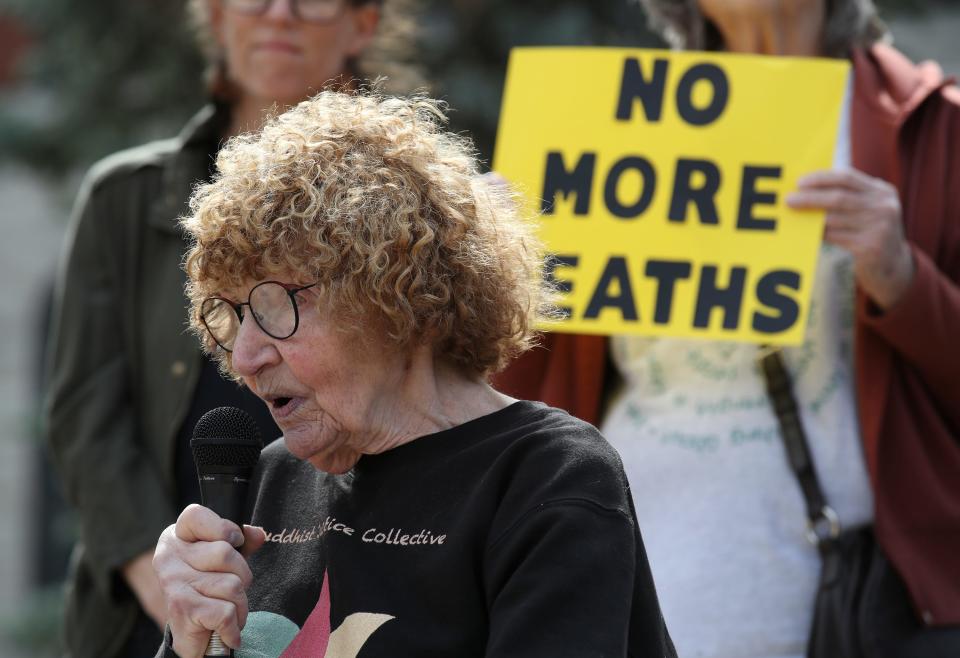What Louisville can learn from Kenton County Jail to stop deaths: Opinion
You get what you pay for, and that’s why people are dying and being sexually assaulted in Kentucky’s county jails. Over the span of just 5 months, Louisville Jail saw nine in-custody deaths. Just across the river in Clark County, 28 women have filed a lawsuit after being raped by other inmates after a former corrections officer sold the men the keys to the female’s cells for $1,000. The first weekend in Sept. saw three inmates at Louisville Metro jail overdosed.
Addressing this problem begins with a fairly simple solution: funding. Despite a little over 11% of Kentucky’s budget being allotted for criminal justice, a majority of jails are understaffed and over capacity. As a whole, Kentucky jails are at 103% capacity, but some county jails are egregiously overpacked. Pulaski county jails are currently at 208% capacity, for example, and more than half of Kentucky’s jails are currently housing more inmates than they have beds.
More:Louisville Metro Corrections staff investigating another death of person housed at jail
As Kentuckians continue to look away from the problems within our jail system, abuses amount. As of the end of last month, another Louisville inmate died in the hospital on Aug. 26 after he attempted suicide in the Louisville jail the previous Monday. That same week, the juvenile detention center was intentionally set on fire, inciting chaos within the facility. Several juveniles were able to flee the building, and several thousands of dollars in damages resulted.
The idea to better fund our jails and prisons seems counterintuitive to some, but in a world where we finally realize that some people deserve to be behind bars, it is imperative that we get them there safely. Incarcerating violent individuals is a step in the right direction, but we can’t stop there. While the incapacitative effect of jails and prisons has a benefit, more than most offenders will eventually be released. Under our current system, they are released with tenuous ties to society and gaps in their work history.
Instances like those in Louisville and Clark County demonstrate that a justice system stretched this thin is unable to provide even its most basic function — safety.
Providing enough funding to ensure that both inmates and correctional officers are safe is an imperative first step to broadening the positive effects of incarceration for everyone involved. This starts by ensuring that correctional officers have a competitive salary and that a talented pool of applicants sees the work as a worthy pursuit.

More:Sheriff pushes to separate 'myth' from 'fact' in jail rape lawsuit. Lawyer isn't convinced
Currently, a corrections officer in Kentucky is paid an average of $36,000 and expected to maintain stability in one of the most hectic and sometimes deadly workplaces in existence. Louisville Metro Department of Corrections —the one responsible for 10 deaths since last November —has had historic issues with maintaining employees, as the new director explains. A bump in salary would increase the talent pool, and proper staffing could diminish the kind of negligence that led to those deaths. Not only that, but proper compensation for officers would reduce their incentive to smuggle in cigarettes and drugs, or to allow and facilitate inmate-on-inmate violence.
In addition, by expanding our investment in jails and corrections more broadly, we can do more than simply reduce the number of deaths behind bars. We can help inmates learn to deal with the problems that landed them there in the first place.
Substance abuse crimes
In 2021, 40% of Class D Felons being held in Kentucky jails were there for drug crimes. Jail is notoriously bleak for individuals serving low-level crimes because of a lack of programs or services aimed at “short-stay” inmates—despite the fact that 95% of Kentucky inmates were expected to serve between 1 to 5 years in jail in 2021.
Investing in substance use treatment programs has been proven to work. A new paper by George Mason Law and Economics found prison rehabilitation programs were a cost-effective way to reduce recidivism. By providing mental health counseling and job training, these programs effectively reduced the likelihood that individuals returned to prison.
According to the National Institute of Health, effective drug treatment needs to be readily available, tailored to the individual, consistently monitored, and must be a minimum of three months. Not only that, NIH explicitly states that treatment does not have to be voluntary for it to be effective. If funded properly, our jails could provide the exact setting for the effective treatment many Kentuckians need.
Kenton County is a good role model
Kentucky doesn’t have to look far to see an effective way to run a jail — it can simply look to Kenton County. The Kenton County Detention Center offers a voluntary treatment and aftercare program for interested individuals. It seems to be working. Of those that have completed the in-jail and aftercare services, only 24% returned to jail after three years, compared to the national 68% recidivism rate.
While Kenton County is just one of the 120 counties in the Bluegrass State, it proves that jails can be run more effectively. Abuse, death, and corruption need not be a staple of our criminal justice system. With better funding and a more humanistic approach, we can begin to reverse this violent trend.
Erinn Broadus is Deputy Director of Criminal Justice Policy at Pegasus Institute and a Young Voices contributor. She has been published in the Huffington Post, Kentucky Today, and the Northern Kentucky Tribune. Prior to Pegasus, she worked at Pew Charitable Trusts.
This article originally appeared on Louisville Courier Journal: Cutting corners and low pay leads to jail deaths on the inside and out

